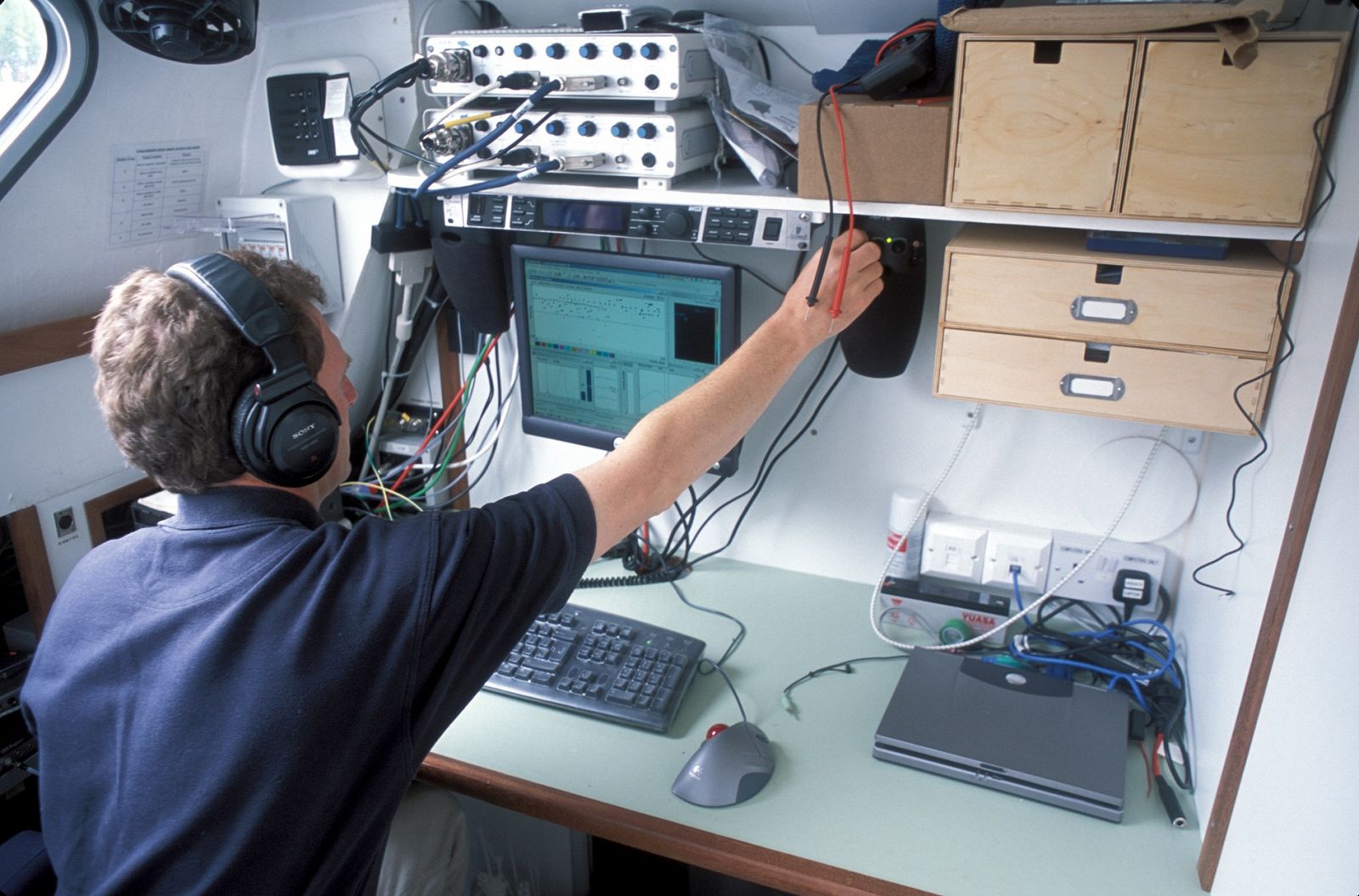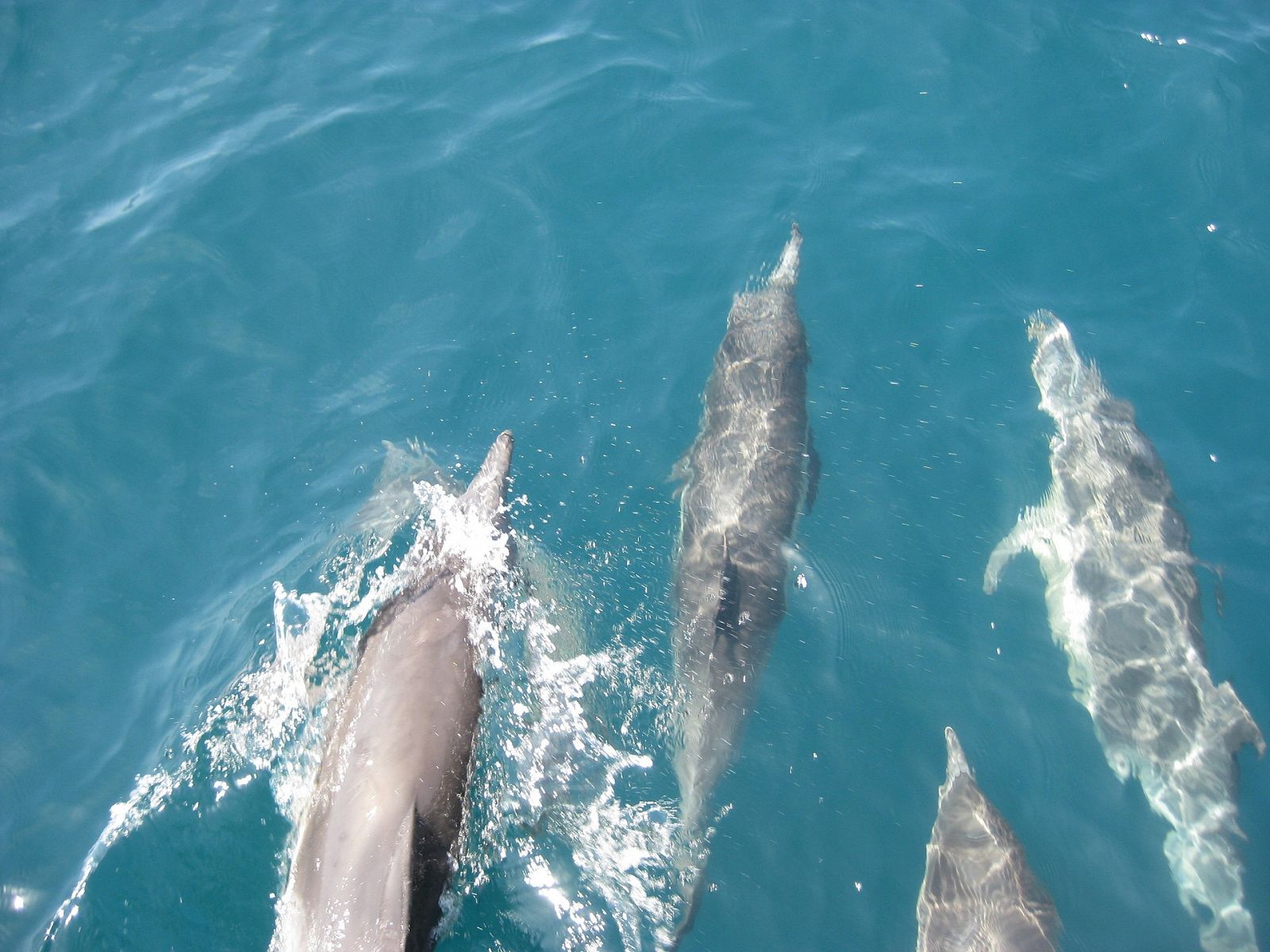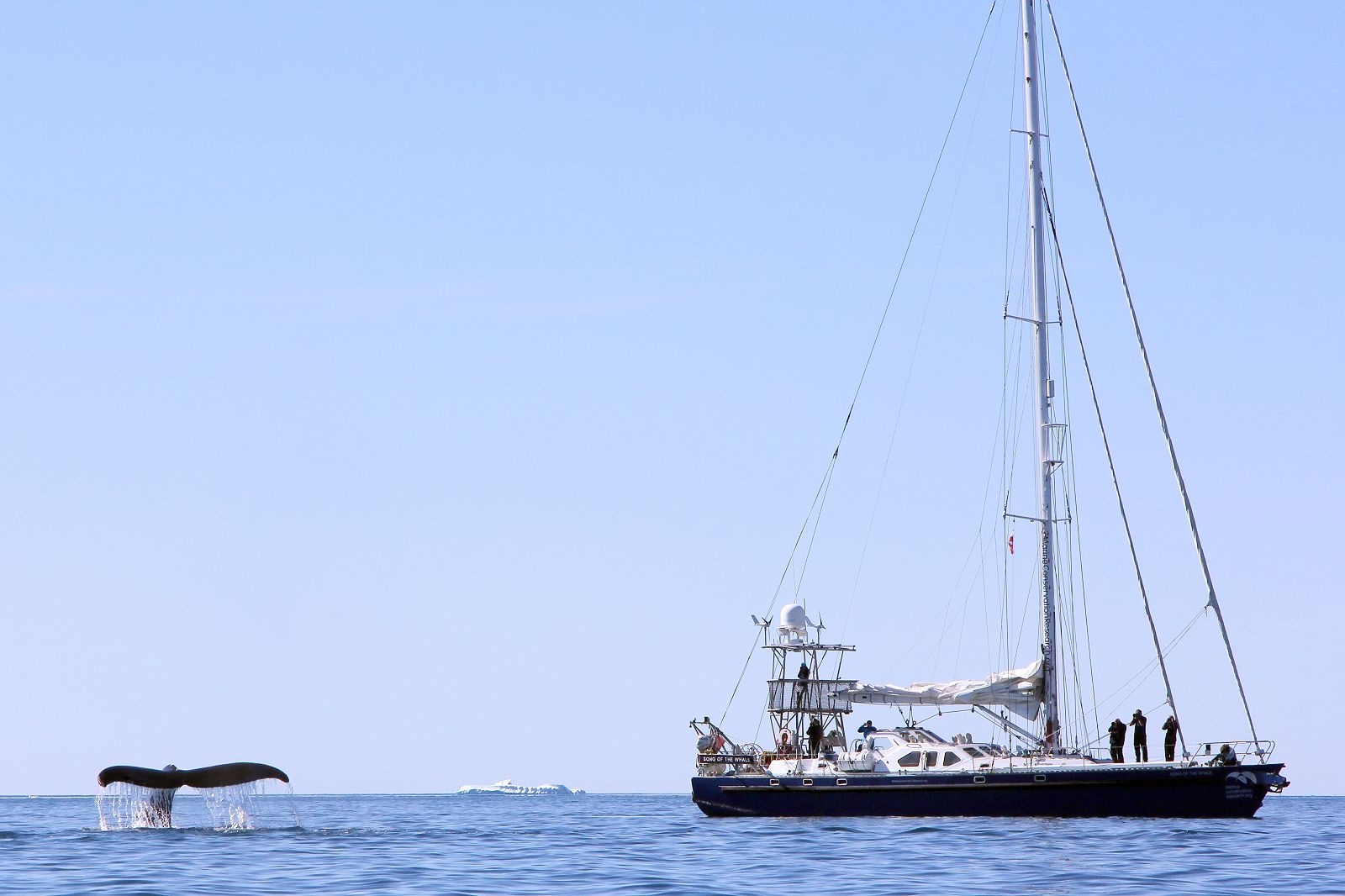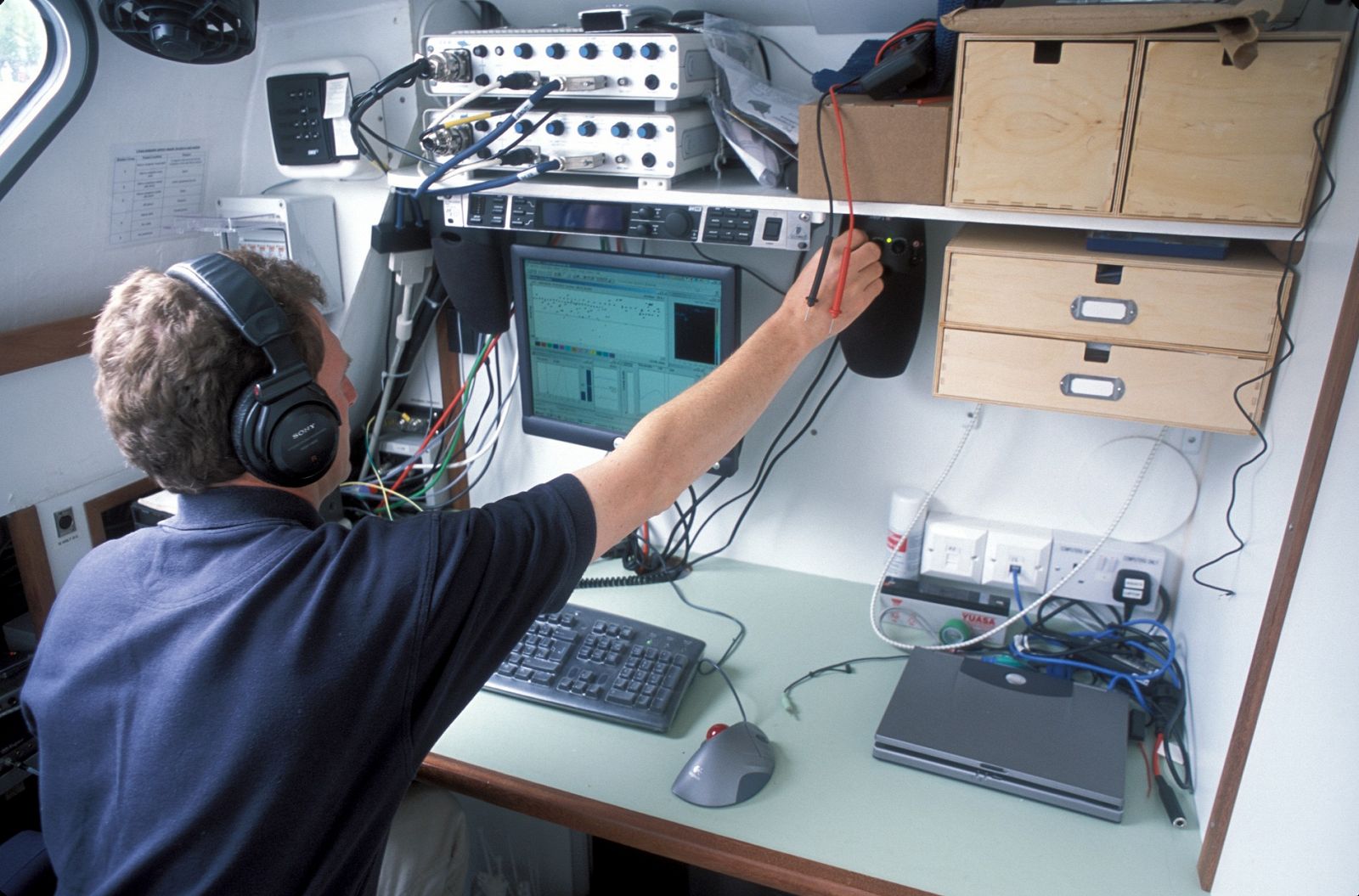British Library Sound Archive - Underwater Field Recordings
Following on from our debut programme of West African recordings, next in our series is one hour of continuous underwater field recordings selected and mixed by Cheryl Tipp, Wildlife and Environmental Sounds Curator at the British Library.
The British Library’s collection of wildlife sounds was established in 1969 when the sound archive was an independent body known as the British Institute of Recorded Sound. Today, the collection has over 250,000 catalogued wildlife and environmental sound recordings covering all classes of sound-producing animals from all zoogeographical regions.
This mix features thirteen recordings woven together to create an uninterrupted flow of underwater recordings, from a Humpback Whale singing in the Caribbean Sea to the metallic creaks of a Victorian pier. Some sections take inspiration from the slow radio movement, inviting the listener to pause and enjoy the silences as much as the sounds. These calmer periods are peppered with more energetic bursts of activity. All have been chosen to reflect the diversity of life in our marine and freshwater habitats.
Many of the library’s underwater field recordings are being digitised as part of Unlocking our Sound Heritage, a major preservation and access project supported by a £9.5 m National Lottery grant. The funding will enable the formation of the first ever national network of ten sound preservation centres which will come together with the British Library to save almost half a million rare and unique recordings that are threatened by physical degradation or stored on formats that can no longer be played. Unlocking our Sound Heritage forms part of a core British Library programme, Save Our Sounds, which pledges to preserve the nation’s sound heritage.
This selection was put together to mark World Day for Audiovisual Heritage, an international celebration highlighting the importance of sound and moving image. The commemoration was initiated by UNESCO in 2005 and is observed annually on 27th October.
Many thanks go to all the recordists for agreeing to have their recordings shared on NTS.

British Library Sound Archive: Underwater Field Recordings
Track 1 – 00:00:00 [British Library collection WA 13/015 reference number 212539, excerpt]
Cromer Pier underwater, recorded by Peter Toll in Norfolk, England on 13 March 2012
This recording was made by lowering hydrophones (specialised microphones designed to record underwater) over the side of Norfolk’s Cromer Pier into the sea to a depth of roughly 6 metres. As well as the gentle ebb & flow of the tide, the recording also includes metal creaks from the pier itself. Though the wildlife sounds collection is dominated by recordings of species, we also archive a range of environmental sounds which document the non-biological sounds of Planet Earth.

Bottlenose Dolphins bow-riding.
Track 2 – 00:05:21 [British Library collection WA 05/31, excerpt]
Bottlenose Dolphin (Tursiops truncates) echolocation & various call types, recorded by Oliver Boisseau in Milford Sound, New Zealand on 15 August 2001
Bottlenose Dolphins are undoubtedly the most familiar of all the dolphins. This highly intelligent species can be found throughout tropical and temperate waters where they form social groups known as pods. Research indicates that individuals possess unique whistles which act much in the same way a name does. It has also been suggested that groups may have their own accents. This recording includes a range of call types from a group beginning a dive, as well as periods of intense echolocation as individuals expertly scan their surroundings.
Track 3 – 00:13:07 [British Library collection WA 02/08 reference number 112077, excerpt]
Harp Seals (Phoca groenlandicus) vocalising under the ice, recorded by the International Fund for Animal Welfare in the Gulf of St Lawrence, Canada during April 1997.
Not all recordings in an archive will be perfect. There will be handling noise, distortion, wind. The point of an archive is not to only contain flawless recordings though; an archive’s role is to offer as many resources as possible. For wildlife, our main aim is to be able to represent the vocabularies of as many species as possible. We have recordings that are technically flawed, yet these recordings may be the only recordings in existence of a particular species. This recording of Harp Seals has its imperfections yet still captures the bustling atmosphere of life under the sea ice.
Track 4 – 00:17:18 [British Library collection C1428/53, excerpt]
Excerpt from Touch Radio 53: The Lough’s Breath, recorded and produced by Tom Lawrence
Curators are often asked to help identify unknown sounds. In this excerpt from Touch Radio 53: The Lough’s Breath, recordist Tom Lawrence speaks about contacting the sound archive after recording some unfamiliar underwater sounds. There is still so much to learn about the vocalisations produced by marine and freshwater species that collaboration through contacts and social media is usually the only way to come close to a positive identification.
Track 5 – 00:20:21 [British Library collection WA 13/015 reference number 212534, excerpt]
Pond life, recorded by Peter Toll in Llandrindod Wells, Wales on 30 September 2011
Accompanying documentation is a crucial element of archiving wildlife and environmental field recordings. Without context, these sounds become little more than sound effects that have limited potential for reuse within an archival setting. Thanks to the accompanying metadata, we know that this recording was made on a Welsh smallholding and includes the sounds of newts, aquatic beetles and oxygenating plants. The recordist Peter Toll described the habitat as “a beautiful small pond that was carefully created to give life to as many creatures as possible. It looked so still and tranquil above the surface, until I lowered my hydrophones and was truly amazed by what sounds I could hear below the surface.”
Track 6 – 00:25:29 [British Library collection WA 16/001 reference number 217117, excerpt]
Gentle waves from underwater recorded by Richard Beard on the Isle of Wight, England on 29 August 2013
Every unpublished wildlife & environmental field recording that comes into the wildlife section is assigned a unique reference number as well as a unique filename. The reference number, included as part of a vocal announcement which precedes the actual field recording, acts as an audio signpost for listeners, providing information on both the sound and the recordist. This small addition can be incredibly useful, especially to researchers working with a large sample of recordings or out in the field without access to the original catalogue record. This recording was made by burying a pair of Jez riley French hydrophones in the sand at the edge of the sea.
Track 7 – 00:32:22 [British Library collection WA 93/59 reference number 31522, excerpt]
Sperm Whale (Physeter macrocephalus) clicks and codas, recorded by John B. Cunningham in the North Atlantic Ocean
A coda is a series of clicks that is used by Sperm Whales to communicate with each other. In this recording, a group of over 20 individuals were present. Aside from the Sperm Whales themselves, an important aspect of the recording is the ship’s propeller, which can clearly be heard in the background. Anthropogenic, or human-made noise, is one of the greatest threats to the marine environment. Studies have shown that whales and dolphins have been known to abandon their feeding and breeding grounds, change their migration paths, alter their calls, stray into fishing nets, collide with vessels and even fall silent. They can display weakened immune systems due to sustained levels of stress, experience problems with locating their prey and find it difficult to hear the calls of their group members. Almost every aspect of their lives is affected.
Track 8 – 00:35:05 [British Library collection WA 14/005 reference number 212692]
Common Frog (Rana temporaria) tadpoles feeding, recorded by Simon Elliott in Tyne and Wear, England on 9 June 2013
This recording of Common Frog tadpoles feeding was made in a pond in the Gosforth area of Newcastle. The tadpoles were attracted by fixing a dandelion leaf to the hydrophone. Simon Elliott is a member of the Wildlife Sound Recording Society and a long-time donor of recordings to the British Library. Never one to shy away from a challenge, Simon has provided the library with thousands of recordings over the years, one of the most special being the heartbeat of a young bird of prey.
Track 9 – 00:37:54 [British Library collection WA 84/67 reference number 02857]
Haddock (Melanogrammus aeglefinus) spawning sounds, recorded by Anthony D. Hawkins at the Marine Laboratory Aberdeen, Scotland during April 1967
As with many other forms of marine life, Haddock are also under threat from noise pollution. The constant noise generated during the construction of offshore wind farms effectively drowns out the haddock calls so that they can no longer hear each other. For species that communicate using sound, this masking effect can have devastating consequences for their survival. Male Haddock communicate using a series of repetitive ‘knocks’ which are produced by their swim bladder, an air-filled sac which vibrates through the actions of specialised sonic muscles.

Song of the Whale research vessel (courtesy of Marine Conservation Research International).
Track 10 – 00:39:41 [British Library collection WA 02/08 reference number 112049, excerpt]
Pilot Whale (Globicephala sp.) clicks and calls, recorded by the International Fund for Animal Welfare in the North Atlantic Ocean on 7 September 1990
This short recording of pilot whales was recorded by the Song of the Whale research team which was started by the International Fund for Animal Welfare (IFAW) in 1987 to develop and promote non-invasive ways to study marine mammals. Since then the team have studied a range of threatened species including Sperm Whales, North Atlantic Right Whales, Blue Whales, Monk Seals, dolphins and porpoises. The team has generated an important archive of marine mammal recordings from over 20 different regions and countries, including the Caribbean, the Mediterranean, the Azores, Iceland and West Africa. In 2011 the not-for-profit organisation Marine Conservation Research International was formed to enable the team to continue to conduct practical conservation projects on vulnerable marine wildlife and habitats.
The Song of the Whale is the team’s purpose built sailing research vessel and has been used to assess the distribution and abundance of marine mammals and investigate human impacts including underwater noise, disturbance and marine debris. Due to numerous design features, the Song of the Whale is one of the quietest marine research vessels in the world and operates with minimal disturbance to marine life.
For further information on the work of the Song of the Whale team visit www.marineconservationresearch.org
Track 11 – 00:40:39 [British Library collection WA 13/015 reference number 212541, excerpt]
Exmouth Marina underwater, recorded by Peter Toll in Devon, England on 25th May 2011
This recording was made by lowering hydrophones onto the seabed at the marina entrance. A variety of sounds can be heard which represent both the working life of the marina as well as the animals that live in the surrounding waters. The rattling & creaking of metal is accompanied by the sounds of shrimp, shore crabs and fish.

Song of the Whale scientist tracks a whale acoustically using specially designed software (courtesy of the International Fund for Animal Welfare).
Track 12 – 00:45:42 [British Library collection WA 02/08 reference number 112199, excerpt]
Male Humpback Whale (Megaptera novaeangliae) singing in the Caribbean Sea, recorded by the International Fund for Animal Welfare on 25 March 2000
The first recordings of Humpback Whales were made in the 1950s and 60s using hydrophones originally developed by the U.S. Navy. In 1971 marine biologists Roger Payne and Scott McVay published their seminal paper ‘Songs of Humpback Whales’ which likened the long, fixed sequences of repeated vocalisations produced by Humpbacks to the songs of birds. This research, together with the release of an LP of the same name, helped bring public attention to the plight of Humpback Whales which had been almost hunted to extinction for their oil and meat during the 20th century. After years of campaigning, the International Whaling Commission implemented a moratorium on commercial whaling in 1986. Though some countries still oppose the ban, the good news is that most populations of Humpback Whales have shown signs of recovery. This recording is a classic example of Humpback Whale song, with clearly defined repeated sequences of calls that change every few minutes.
Information about IFAW’s work to rescue and protect animals around the World may be found at www.ifaw.org
Track 13 – 00:53:00 [British Library collection WA 14/018, excerpt]
Nocturnal crustaceans recorded by Slavek Kwi in Tasmania, Australia on 8 March 2011
Though this may sound like crackling fire, the pops, clicks and snaps heard in this recording are actually the sounds made by tiny marine crustaceans congregating around the base of a pier on Tasmania’s Bruny Island. The effect of listening to this constant crackling during the recording process was an almost hypnotic affair - the more the recordist listened, the more he became aware of the patterns and rhythms happening just under the water’s surface.
